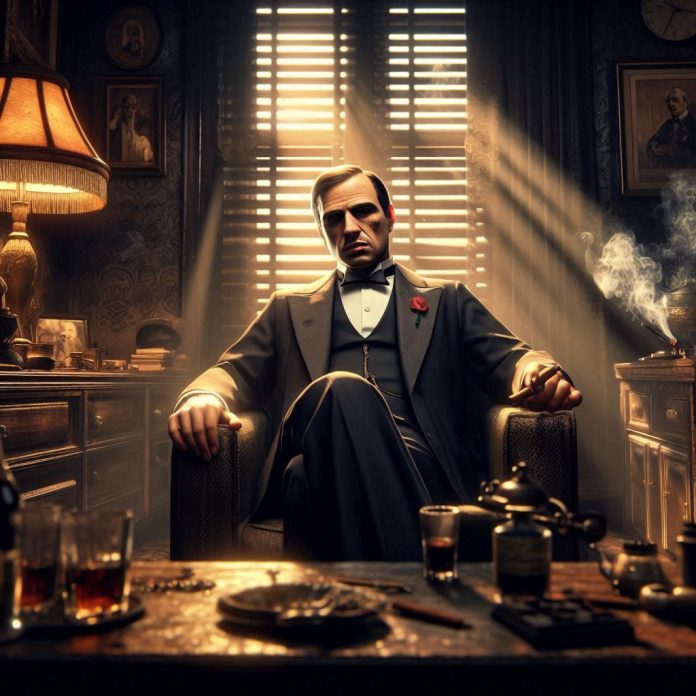The allure of the Mafia world has fascinated audiences for decades, thanks in no small part to Mario Puzo’s novel and Francis Ford Coppola’s cinematic masterpiece, The Godfather. But how does this iconic story translate into the realm of video gaming? In this review, I’ll take a closer look at The Godfather: The Game, a title that promised to immerse players in the gritty underworld of organized crime. Join me as I explore its strengths, weaknesses, and overall impact on the gaming landscape.
A Journey Back to 1940s New York
When I first booted up The Godfather: The Game, I was instantly taken back to the 1940s New York City setting. The atmosphere was rich and immersive, capturing the essence of the film and the era perfectly. The game’s developers, EA Redwood Shores, did an impressive job of recreating the bustling streets, dark alleys, and iconic locations from the film. As I roamed the city, I felt a sense of nostalgia and excitement, reminiscent of the scenes from the movie.
Storyline and Characters
One of the most compelling aspects of The Godfather: The Game is its narrative. The game allows players to step into the shoes of a character who is not part of the original film’s storyline but instead serves as a new enforcer for the Corleone family. This original character, created for the game, provides a fresh perspective while allowing players to interact with familiar faces from the film, such as Vito Corleone and Michael Corleone.
As I progressed through the game, I found myself engaged in various missions that mirrored key events from the movie. From establishing my own criminal empire to navigating betrayals and alliances, the storyline kept me invested throughout. The voice acting, featuring performances from some of the original cast members, added authenticity and depth to the experience.
Gameplay Mechanics
The gameplay mechanics in The Godfather: The Game are a blend of open-world exploration, mission-based objectives, and combat. Players can freely roam the streets of New York, engaging in side missions, collecting weapons, and building their criminal reputation. I found the open-world design to be one of the game’s highlights, as it allowed for a sense of freedom and exploration.
Combat System
The combat system, however, left something to be desired. While the game offers a variety of weapons and melee options, I often found the controls to be clunky, making battles less fluid than I had hoped. There were moments when I struggled to execute basic moves, which could be frustrating during intense confrontations. Despite this, I appreciated the option to use stealth tactics, which allowed for a more strategic approach to missions.
Driving Mechanics
Driving in The Godfather: The Game was another mixed bag. The vehicles felt authentic to the time period, but I found the driving mechanics to be somewhat cumbersome. Navigating through traffic and making sharp turns often felt more challenging than it should have been. On the other hand, the thrill of evading police while speeding through the streets added an exhilarating element to the gameplay.
The Godfather: The Game vs. Other Titles
When comparing The Godfather: The Game to other open-world titles released around the same time, such as Grand Theft Auto: San Andreas and Mafia, it becomes clear that the game has its unique strengths and weaknesses. While it may not offer the same level of polish as its contemporaries, its connection to the beloved film franchise and its authentic atmosphere provide a distinct experience.
Open-World Exploration
Unlike GTA, which often embraces chaotic gameplay, The Godfather: The Game leans more into the narrative of organized crime, allowing for a more immersive experience. However, it lacks some of the depth and variety found in Mafia, which offers a more refined story and character development. This makes The Godfather: The Game a worthy but niche addition to the genre.
Graphics and Sound Design
Visually, The Godfather: The Game captures the gritty aesthetic of the 1940s. The character models, while not groundbreaking, convey a sense of realism that complements the game’s themes. The environments are richly detailed, from the dimly lit bars to the bustling streets, creating an authentic backdrop for the unfolding story.
The sound design also deserves mention. The soundtrack features a blend of era-appropriate music, enhancing immersion. Additionally, the voice acting, particularly from the original cast, elevates the overall experience, making interactions feel more genuine.
The Legacy of The Godfather: The Game
Despite its flaws, The Godfather: The Game holds a special place in the hearts of gaming enthusiasts and fans of the film. It serves as a nostalgic journey through the iconic world of Mafia and crime, allowing players to explore a narrative that complements the original story. For those who appreciate the blend of film and gaming, this title is a must-try, even with its imperfections.
Conclusion
In conclusion, The Godfather: The Game is an ambitious attempt to merge the cinematic experience of the film with the interactive nature of gaming. While it may not reach the heights of some of its contemporaries, it offers an engaging narrative, immersive environments, and a unique perspective on the world of organized crime. If you’re a fan of the film or simply enjoy exploring open-world games, I encourage you to give it a try. Just be prepared for a few bumps along the way.
<iframe width="560" height="315" src="https://www.youtube.com/embed/X4GeFZ0MWf8?si=74bw0B6sZxeGDEfh" title="YouTube video player" frameborder="0" allow="accelerometer; autoplay; clipboard-write; encrypted-media; gyroscope; picture-in-picture; web-share" referrerpolicy="strict-origin-when-cross-origin" allowfullscreen></iframe>




.jpg?w=100&resize=100,70&ssl=1)
